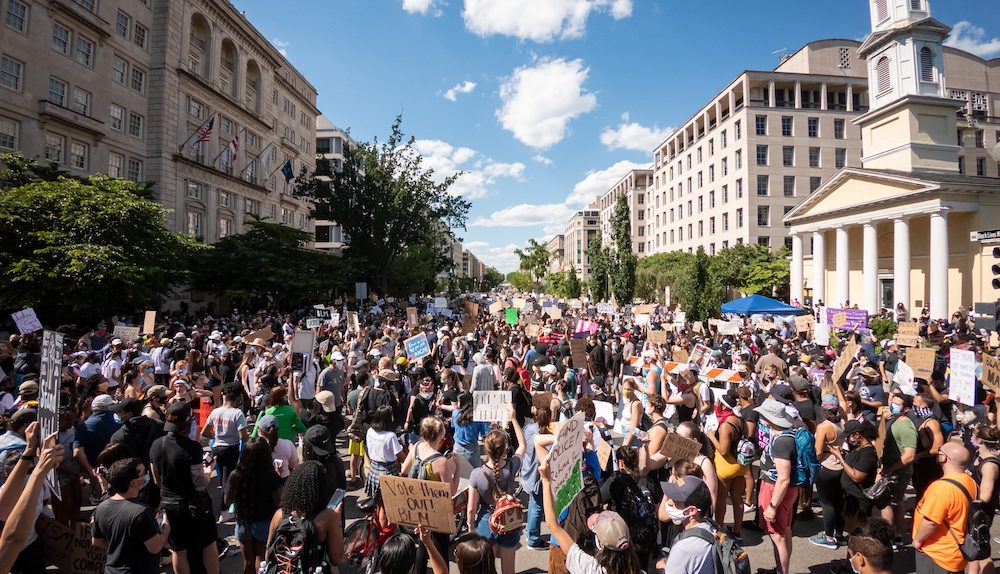- The killing of George Floyd at the hands of Minneapolis Police sparked a wave of massive protests across the country.
- With some protests drawing thousands of attendees, complying with social distancing guidelines was often impossible.
- The CDC is now urging protestors to get tested for the coronavirus.
The senseless killing of George Floyd last month sparked a wave of protests against police abuse and racial inequality. These protests, however, came in the midst of the coronavirus pandemic and some health experts are now advising individuals who found themselves in large crowds over the past two weeks to get tested for COVID-19.
Most notably, the Center for Disease Control and Prevention (CDC) recently said that it’s keeping a close eye on the protests and any resulting spike in coronavirus cases. Especially because it’s hard, if not impossible, to adhere to social distancing guidelines at massive protests, CDC spokesperson Kristen Nordlund recently said that individuals who don’t get tested could put others at risk.
“It is too early to know what, if any, effect these events will have on the federal COVID-19 response,” Nordlund said. “Every local situation is different. State and local officials will make decisions to protect public health and safety based on circumstances on the ground.”
Over the weekend, CDC director Redfield articulated that the dynamics of large protests could prove to be a breeding ground for new coronavirus infections.
“I do think there is a potential, unfortunately, for this to be a seeding event,” Redfield said recently. “And the way to minimize it is to have each individual to recognize it’s to the advantage of them to protect their loved ones, to [say]: ‘Hey, I was out. I need to go get tested.’ You know, in three, five, seven days, go get tested. Make sure you’re not infected.”
To date, we haven’t seen any data which indicates that the recent protests have caused a jump in coronavirus cases. Still, because the coronavirus can spread more readily than the flu, the CDC’s recommendation for increased testing as a result of the aforementioned protests makes sense.
Meanwhile, the good news is that the coronavirus is starting to subside significantly in many areas that were previously hit hard by the pandemic. As a prime example, New York City — which was previously the epicenter of the coronavirus in the United States — recently went a full day with zero coronavirus-related deaths for the first time in months. Beyond New York City, a number of states have started reopening over the past few days and it seems that we may be back on a path, however slow, to normalcy.
Unrelated to the protests, some states which didn’t impose strict lockdown measures are starting to see an uptick in coronavirus cases. Florida, for instance, saw the number of coronavirus cases skyrocket by 46% last week.








